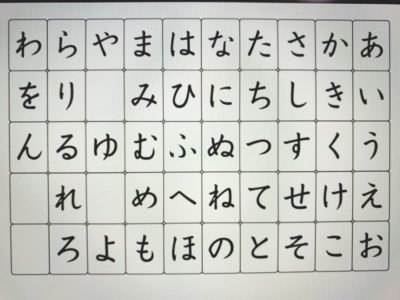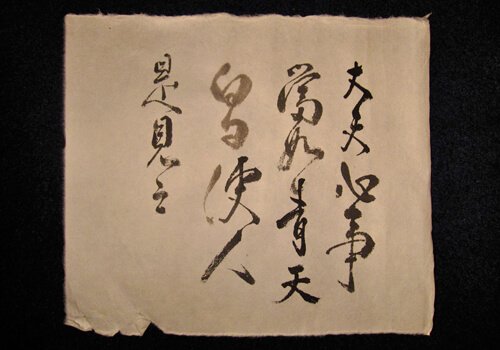
Learning Japanese opens a door to a rich cultural and linguistic world, and at the core of this journey lies the Japanese writing system. Unlike English, which uses a single alphabet, Japanese employs three distinct scripts—Hiragana, Katakana, and Kanji—that work together to form a complex yet highly effective system of communication. This article explores how the Japanese writing system works and how learners can master each script efficiently.
The Japanese writing system is a unique combination of phonetic and logographic characters. It consists of:
Each component plays a vital role in everyday Japanese writing, from literature to signage and business communication.
A long time ago, Japanese had no writing system at all—until kanji (Chinese characters) arrived from China, sometimes via Korea, over a thousand years ago. At first, Japanese government officials, scholars, and religious leaders learned and used Chinese to record information. Eventually, they wanted to write in Japanese itself.
However, using only kanji to write Japanese posed a big challenge. Kanji mainly represent meanings rather than sounds, so it wasn’t easy to apply Chinese characters, designed for a very different language, to Japanese, which has a completely different grammar and sound system.
For example, Chinese verbs don’t change their form for tense or endings like English or Japanese verbs do. A Chinese verb character is always pronounced the same, no matter what. But Japanese verbs change their endings depending on tense and context. So, how could kanji represent these changing verb endings?
Read More-: Learn Japanese with Anime
Learning Hiragana is typically the first step for any Japanese learner. This script consists of 46 basic characters and a few combinations, each representing a syllable. Hiragana is essential for reading native vocabulary, grammatical functions, and words that don't use Kanji.
By building a solid foundation with Hiragana, you'll be equipped to form basic sentences and understand how Japanese grammar works.

After you’ve got a grip on Hiragana, the next step is mastering Katakana. This script is used for writing foreign names, imported words (like コンピュータ – computer), onomatopoeia, and technical or scientific terms.
Though Katakana characters mirror Hiragana in pronunciation, their sharp, angular shapes differentiate them visually and contextually.
Mastering Katakana opens your eyes to the global influence on the Japanese language and enhances your reading skills in daily contexts.
Read More-: Exploring Classical Japanese (文語 - Bungo)
The third and most complex element of the writing system is Kanji. These characters—borrowed and adapted from Chinese—represent whole words or ideas and often carry multiple readings depending on the context.
There are more than 50,000 Kanji characters, but for everyday use, the Japanese government designates around 2,136 Jōyō Kanji as standard.
A proper introduction to Kanji gives you the power to understand newspapers, signs, websites, and formal documents in Japanese.

Now that you’ve learned the basics of all three scripts, it’s time to focus on reading Japanese text. This is where the system shows how beautifully it works—each script plays a distinct role.
私はパンを食べます。
Watashi wa pan o tabemasu.
(I eat bread.)
As you can see, a single sentence often contains all three scripts, and each one provides cues to meaning, grammar, and pronunciation.
Read More-: Common Mistakes Even Advanced Japanese Learners Make
Consistent reading will boost both your comprehension and your ability to recognize Kanji in context.
Alongside reading, practicing writing in Japanese is essential to solidify your learning. Writing helps internalize grammar, character shapes, and sentence structure.
Handwriting helps reinforce visual memory, especially for Kanji, which can be visually dense and complex.
Read More-: Speaking Japanese Online
Despite its initial complexity, the Japanese writing system works efficiently because it combines the strengths of three scripts:
This structure helps readers quickly identify word categories and meanings, enhancing readability and fluency.
It’s a writing system that balances tradition and functionality—making it not just a tool for communication, but a reflection of Japanese culture and thought.
Kanji readings are not always predictable. Take the word for "volcano" (火山) as an example. When this word was borrowed into Japanese, the language already had native words for "fire" (/hi/) and "mountain" (/yama/). However, instead of simply combining these two readings into /hiyama/, the word 火山 is pronounced as /kazan/. This is because the word was borrowed from Chinese, and the pronunciation chosen reflects the original Chinese reading at the time of borrowing.
Because kanji readings can be so unpredictable, Japanese often use furigana—small hiragana characters written above or beside kanji—to indicate their pronunciation in specific contexts.
For our example, the furigana would look like this:
火山(かざん)
However, it’s important to know that furigana is mostly used in children’s books, materials for beginners, or when a kanji is rare and the reader might not know how to read it. This means that as you advance, you’ll need to memorize how kanji are read in different words and situations. While this may sound daunting at first, if you take it one word at a time, it becomes much more manageable.
Luckily, you’re already getting lots of practice just by working through your lessons. The more you see hiragana, katakana, and kanji in vocabulary, sentences, and stories, the more familiar they’ll become! Here are some extra ways to boost your reading and writing skills:
1. What are the 3 types of Japanese writing?
The three main Japanese writing systems are hiragana, katakana, and kanji. Hiragana and katakana are phonetic scripts, while kanji are characters borrowed from Chinese that represent meanings.
2. Which writing system is most used in Japan?
All three writing systems are used together daily. However, kanji are most common in formal writing and newspapers, while hiragana and katakana are often used for grammar, particles, foreign words, and emphasis.
3. What is hiragana vs katakana vs kanji?
Hiragana is used for native Japanese words and grammar; katakana is mainly for foreign words and names; kanji are complex characters representing ideas or words borrowed from Chinese.
4. What is the format of Japanese writing?
Japanese can be written both horizontally (left to right) and vertically (top to bottom, right to left), depending on the context like books, newspapers, or signs.
5. Is Japanese hard to write?
Writing Japanese can be challenging because it uses three different scripts and many kanji characters to memorize. But with practice and patience, it becomes manageable and even fun!
The Japanese writing system might seem daunting at first glance, but with the right approach, it's incredibly rewarding to master. Whether you’re learning Hiragana, mastering Katakana, diving into an introduction to Kanji, or regularly reading and writing Japanese, the structure of the writing system supports your progress every step of the way.
Keep practicing, stay consistent, and you’ll soon find yourself reading entire pages of Japanese text with confidence and clarity.